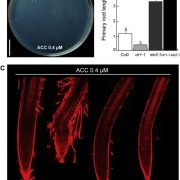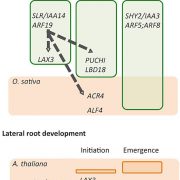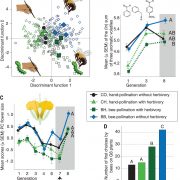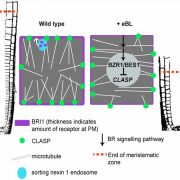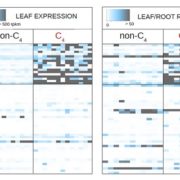Archetypal roles of an ABA receptor in drought and sugar responses in liverworts ($) (Plant Physiol)
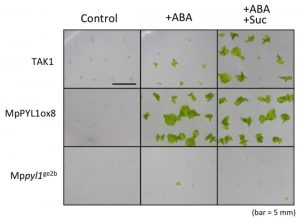 Much of our understanding of the molecular pathway for ABA response comes from studies on Arabidopsis. Thanks to genomic sequencing efforts, we know that this pathway is largely conserved amongst plants, including mosses. Jahan et al. extend this understanding to liverworts, drawing on the recently sequenced genome of Marchantia polymorpha. They identified five proteins as showing some homology to the PYL/PYR/RCAR ABA receptors, but found that only one, MpPYL1, showed all of the characteristics of these receptor proteins. They showed that overexpression of MpPYL1 led to greater ABA sensitivity, and knock-out mutations rendered the plants ABA insensitive. They also show that, like in angiosperms, ABA upregulates the LEA gene family, and mediates responses to exogenous sugars. These data support an ancestral role for the ABA receptors such as MpPYL1 in vegetative dessication tolerance in liverworts. (Summary by Mary Williams) Plant Physiol. 10.1104/pp.18.00761
Much of our understanding of the molecular pathway for ABA response comes from studies on Arabidopsis. Thanks to genomic sequencing efforts, we know that this pathway is largely conserved amongst plants, including mosses. Jahan et al. extend this understanding to liverworts, drawing on the recently sequenced genome of Marchantia polymorpha. They identified five proteins as showing some homology to the PYL/PYR/RCAR ABA receptors, but found that only one, MpPYL1, showed all of the characteristics of these receptor proteins. They showed that overexpression of MpPYL1 led to greater ABA sensitivity, and knock-out mutations rendered the plants ABA insensitive. They also show that, like in angiosperms, ABA upregulates the LEA gene family, and mediates responses to exogenous sugars. These data support an ancestral role for the ABA receptors such as MpPYL1 in vegetative dessication tolerance in liverworts. (Summary by Mary Williams) Plant Physiol. 10.1104/pp.18.00761


